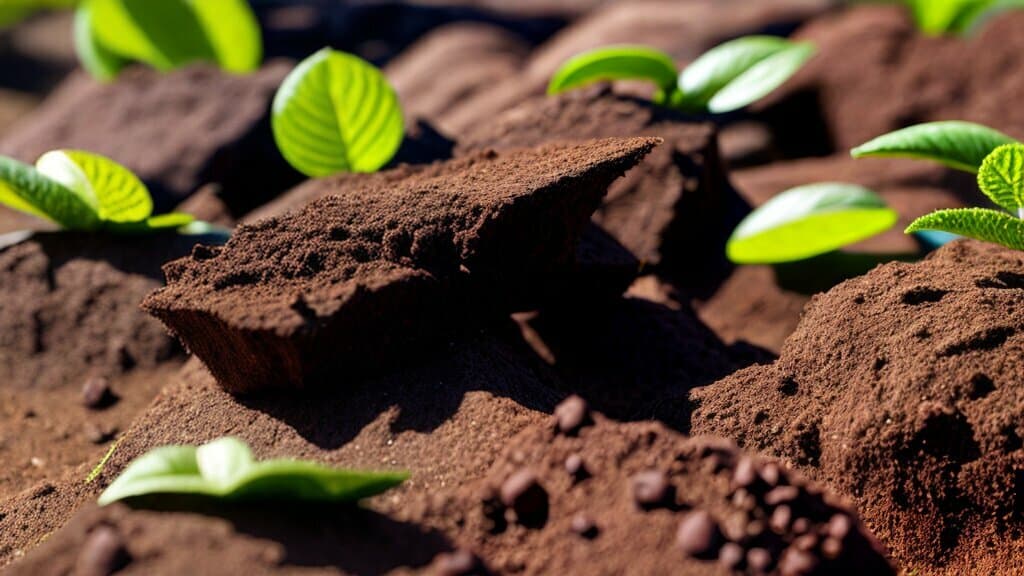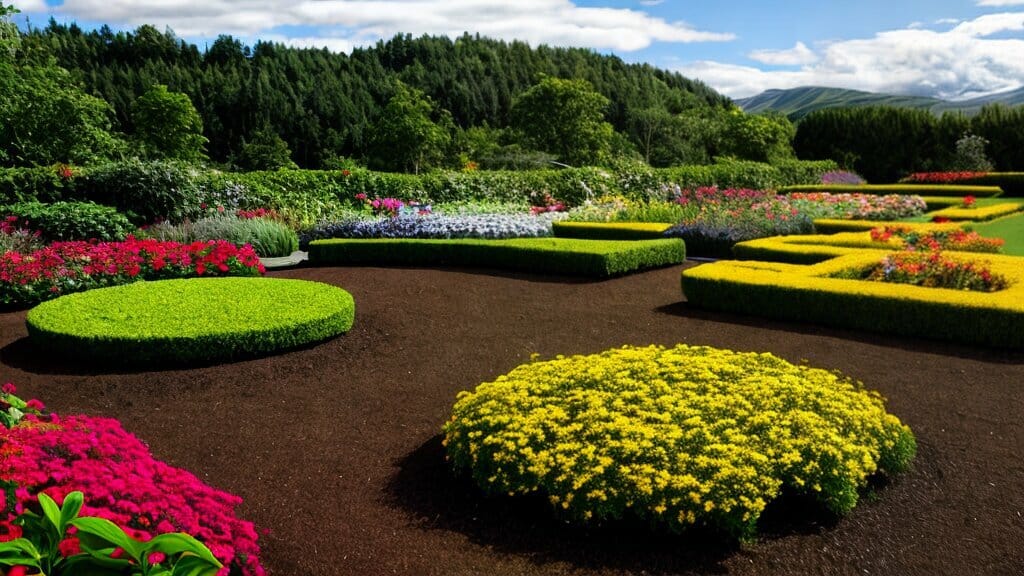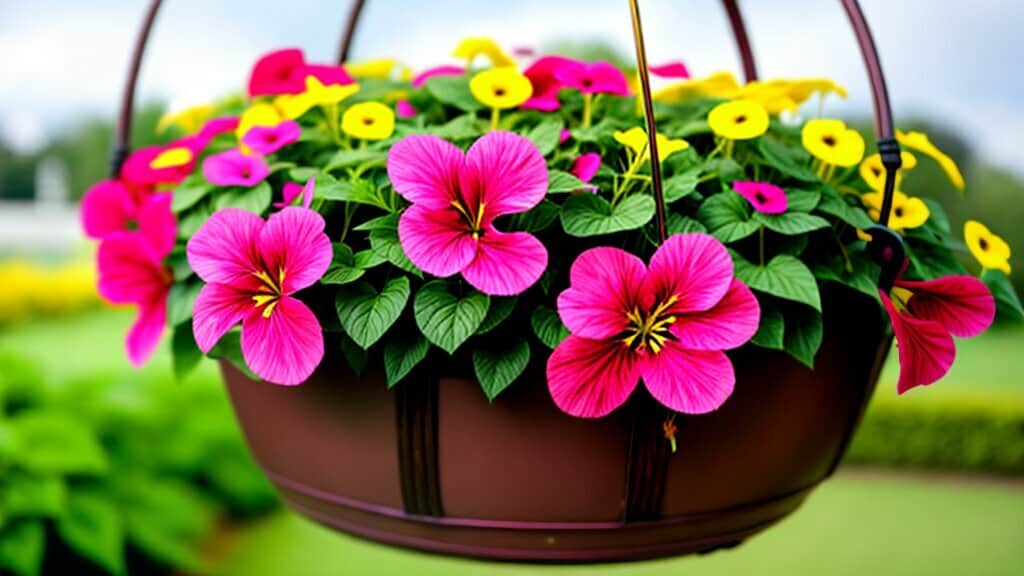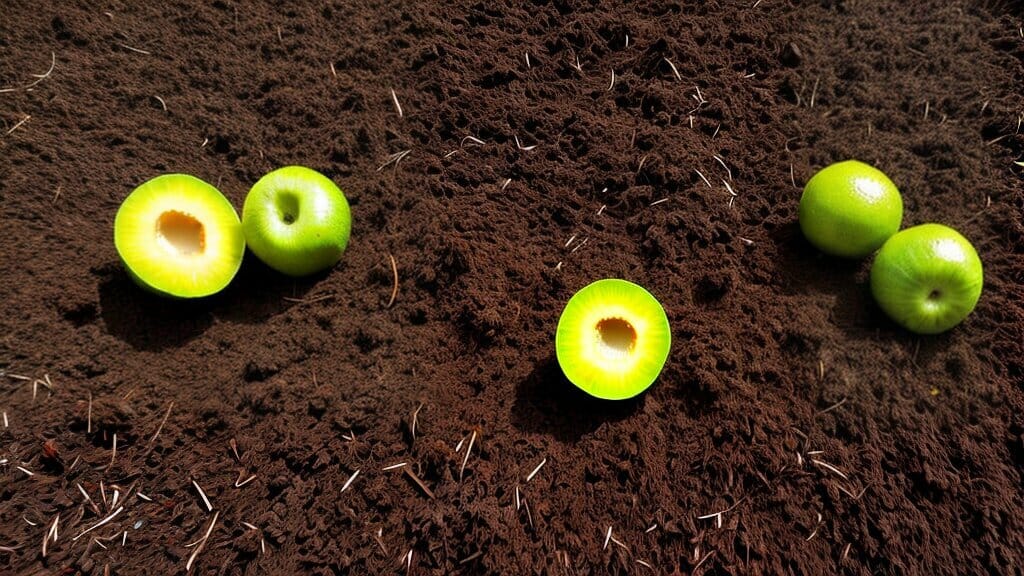Growing healthy plants requires the right mix of nutrients, water, and sunlight. But did you know that the type of soil or growing media you use can also make a big difference? Peat moss, for example, has been a popular choice among gardeners for its ability to retain moisture, improve soil structure, and provide nutrients to plants.
In this article, I will explore the benefits of using peat moss as a growing media for your garden, highlight the best plants that thrive in it, and offer tips for using it effectively.
Key Takeaways:
- Peat moss is a versatile growing media that can improve soil health and growth of your plants.
- Plants that prefer peat moss include flowers, vegetables, herbs, fruits, and berries.
- Using peat moss wisely requires proper preparation, watering techniques, and attention to soil pH levels.
Understanding Peat Moss: A Versatile Growing Media
As a professional copywriting journalist, I have come to understand the importance of a suitable growing media for plants, and peat moss is undoubtedly one of the best options available. Peat moss is a type of organic matter that is harvested from decomposing sphagnum moss in bogs and wetlands. It is a lightweight and spongy material that is highly absorbent, making it an excellent media for retaining moisture and nutrients.
Peat moss has a slightly acidic pH, which is ideal for acid-loving plants such as blueberries, rhododendrons, and azaleas. However, it can also be used for a variety of other plants, including vegetables, herbs, and flowers.
| Characteristics of Peat Moss | |
|---|---|
| Composition | Decomposed sphagnum moss |
| pH | 3.5-4.5 |
| Texture | Lightweight, spongy |
| Moisture retention | Highly absorbent |
One of the most significant advantages of using peat moss as a growing media is its ability to improve soil structure and porosity. It loosens heavy soil, allowing air and water to penetrate more easily, while also providing the right balance of moisture and drainage. Moreover, it helps to prevent soil compaction and erosion, which can lead to poor plant growth and development.

Peat moss also offers a source of nutrients for plants, containing a wide range of minerals and trace elements that are essential for growth. However, it is important to note that peat moss is not a complete fertilizer and should be used in conjunction with other soil amendments to provide a balanced diet for plants.
Understanding Peat Moss: A Versatile Growing Media
In summary, peat moss is a versatile and beneficial growing media that can support healthy plant growth in a range of species. Its water retention capacity, ability to improve soil structure, and nutrient-rich composition make it an excellent option for gardeners looking to maximize plant health and productivity.
Benefits of Peat Moss for Plant Growth
Peat moss is a great choice for plant growth due to its ability to retain moisture. Its unique fibrous structure allows for optimal water retention, providing a consistent source of moisture for plants. This is especially beneficial for plants that require consistent watering, such as ferns and orchids.
In addition to its water-holding capacity, peat moss also improves soil structure. Its fibrous texture creates air pockets in the soil, allowing for better drainage and aeration. This can be particularly useful in heavy clay soils, where drainage can be an issue.
Peat moss also provides nutrients for plant growth. As it decomposes, it releases organic matter that can support the growth of beneficial microorganisms in the soil. These microorganisms, in turn, break down nutrients and make them more available to plants.

Tip: When using peat moss as a growing media, it is important to monitor soil pH. Peat moss is naturally acidic, so it may be necessary to adjust the pH level depending on the plants being grown.
Recommendations for Using Peat Moss as a Growing Media
Peat moss is an excellent choice for growing various types of plants in your garden. However, it is essential to use it properly to maximize its benefits. Here are some expert recommendations for using peat moss as a growing media:
- Choose the right plants: Some plants thrive in peat moss, while others may not do as well. Choose plants that prefer acidic soil and can tolerate the water retention properties of peat moss. Acid-loving plants such as blueberries, rhododendrons, and azaleas grow well in peat moss. Additionally, vegetables like tomatoes, peppers, and cucumbers can benefit from the high organic matter content in peat moss.
- Prepare the soil: Before planting, ensure that the soil is well-drained and loose. Mix peat moss with garden soil to create a light and fluffy growing media. A ratio of 1:1 for peat moss and soil is ideal for most plants.
- Water regularly: Peat moss has excellent water retention properties, but it can also dry out quickly. Water your plants regularly to keep the soil moist but not waterlogged. Check the soil moisture level by sticking your finger into the soil. If it feels dry, it’s time to water.
- Monitor the pH level: Peat moss has a natural acidity level that can affect the pH level of the soil. Monitor the pH level regularly and adjust it accordingly to meet the needs of your plants. Use a pH testing kit to determine the soil’s acidity level and add lime if the pH level is too low.
- Use in moderation: While peat moss offers many benefits, it is not recommended to use it excessively. Overuse of peat moss can lead to soil compaction and nutrient deficiencies. Use it in moderation and mix it with other organic matter such as compost, perlite, or vermiculite.

By following these recommendations, you can use peat moss effectively in your garden and promote healthy plant growth. With its excellent water retention and nutrient-holding capacity, peat moss is a valuable asset for any gardener looking to create a thriving garden.
Alternatives to Peat Moss: Exploring Coco Coir
If you are looking for an alternative to peat moss, you may want to consider using coco coir. Coco coir is made from the fibrous husks of coconuts and is a renewable resource. It has a similar texture to peat moss and offers many of the same benefits for plant growth.
Coco coir has a high water retention capacity, allowing it to hold onto moisture for longer periods of time. This can be especially helpful in climates with dry conditions or if you have plants that require consistent moisture. Additionally, coco coir has a neutral pH level, which means it won’t affect the soil acidity like peat moss can.
Another advantage of coco coir is that it is free of pathogens and weed seeds, making it a more reliable option for starting seeds or transplanting delicate plants. It also breaks down slowly, which means it won’t need to be replaced as frequently as other types of growing media.
Some plants that are known to thrive in coco coir include orchids, bromeliads, and other tropical plants. It can also be used for growing vegetables and herbs, although it may require additional amendments to provide optimal nutrition.

Overall, coco coir is a versatile and sustainable option for gardeners looking to move away from peat moss. It offers many of the same benefits without the environmental concerns associated with peat moss harvesting. Consider giving coco coir a try for your next gardening project.
Best Plants for Peat Moss: Flowers and Ornamentals
When it comes to plants that love peat moss, flowers and ornamentals are a top choice. There are several varieties that thrive in this growing media, providing vibrant colors and fragrant scents.
Hydrangeas: These beautiful shrubs are known for their large, showy blooms and are a popular choice for shady spots in the garden. They require a well-draining soil with plenty of organic matter, making peat moss an ideal addition.
| Plant | Soil pH | Light Requirements |
|---|---|---|
| Hydrangeas | 5.5-7.0 | Part shade to full shade |
Roses: These classic flowers are a garden staple, known for their beauty and fragrance. They prefer slightly acidic soil, which can be achieved by adding peat moss to the planting mix.
| Plant | Soil pH | Light Requirements |
|---|---|---|
| Roses | 5.5-7.0 | Full sun |
Camellias: These evergreen shrubs produce stunning flowers in shades of pink, red, and white. They prefer well-draining soil with plenty of organic matter, making peat moss an excellent addition.
| Plant | Soil pH | Light Requirements |
|---|---|---|
| Camellias | 5.0-6.5 | Part shade to full shade |

These are just a few examples of the many flowers and ornamentals that thrive in peat moss. By incorporating this growing media into your garden, you can enjoy beautiful blooms and lush foliage all season long.
Best Plants for Peat Moss: Vegetables and Herbs
If you’re interested in growing vegetables and herbs using peat moss, you’ll be happy to know that many varieties thrive in this type of growing media. Peat moss offers excellent moisture retention, which can be especially advantageous for vegetables and herbs that require consistent watering. Additionally, peat moss can enhance nutrient absorption and provide an optimal growing environment.
When selecting vegetables to grow in peat moss, consider plants that prefer slightly acidic soil, such as tomatoes, peppers, and potatoes. These crops will benefit from the natural acidity of peat moss, which can help keep soil pH levels within their desired range. Other great vegetable options for peat moss include lettuces, cucumbers, and eggplants.
Herbs that grow well in peat moss include basil, cilantro, and parsley. These plants prefer moist soil and can benefit from peat moss’ excellent moisture retention. Other popular herbs that do well in peat moss include thyme, oregano, and rosemary.
Remember to start your seeds indoors before transplanting to your peat moss garden. This will give the plants a better chance to establish their roots and improve their chance of success. Additionally, be sure to provide adequate drainage to prevent waterlogged roots.

Experimenting with different types of vegetables and herbs in peat moss can be a fun and rewarding experience. With proper care and attention, you can expect impressive yields and high-quality produce.
Best Plants for Peat Moss: Fruits and Berries
If you’re a fan of growing fruits and berries in your garden, you’ll be happy to know that many of these plants thrive in peat moss growing media. Peat moss provides the ideal level of acidity, moisture retention, and nutrient delivery that these plants require to produce juicy, flavorful fruits and berries.
One of the top fruits to consider growing in peat moss is blueberries. These acidic-loving plants require a pH level between 4.0 and 5.0, which is perfectly achievable with the use of peat moss. Cranberries are also an excellent choice, as they require a moist, well-draining growing media, which is exactly what peat moss provides.
For those who love the sweet taste of raspberries, planting them in peat moss can produce a bountiful harvest. Peat moss helps to keep the soil evenly moist, which is vital for the growth of these delicate plants. Another berry that does well in peat moss is strawberries. These plants are particularly sensitive to changes in moisture levels, and peat moss can help to ensure a consistently moist growing media.

When it comes to fruit trees, apples and pears are two varieties that have been shown to thrive in peat moss. These fruit trees require a soil pH between 6.0 and 7.0, and peat moss can be used to help lower the pH level into the optimal range. Additionally, these trees benefit from the peat moss’s ability to hold moisture while still providing adequate drainage.
Last but not least, grapes can also be grown in peat moss. Grapes require a well-draining growing media that retains sufficient moisture, and peat moss is able to provide both of these conditions. By growing your grapevines in peat moss, you’ll be rewarded with delicious, juicy grapes that are perfect for snacking or wine-making.
Maintaining Soil pH in Peat Moss Gardens
Peat moss has a naturally acidic pH, which can affect the growth and development of some plants. Therefore, it is essential to maintain the optimal pH level in your garden to ensure healthy plant growth and development.
The pH scale ranges from 0 to 14, with 7 being neutral, anything below 7 is acidic and above 7 is alkaline. Most plants prefer a slightly acidic soil pH of between 6 and 7.
To determine the pH level of your soil, conduct a soil test using a soil pH kit. You can purchase a soil pH kit from your local nursery or garden center. Once you have determined the pH level of your soil, you can adjust it accordingly using the following tips:
- If the pH level is too low, add lime to raise the pH level. This is particularly important if you are growing plants that prefer a more alkaline soil pH.
- If the pH level is too high, add sulfur to lower the pH level. This is particularly important if you are growing plants that prefer a more acidic soil pH.
- You can also adjust the pH level of your soil by adding organic matter, such as compost or manure. This will help balance the pH level and provide nutrients to your plants.
It is important to note that adjusting the pH level of your soil is a gradual process that should be done over time and not all at once. This will help prevent any sudden shock to your plants.

By maintaining the proper pH level in your peat moss garden, you can ensure optimal plant growth and development.
Tips for Using Peat Moss Wisely
As with any growing media, there are important considerations to keep in mind when using peat moss in your garden. Here are some tips to help you use it wisely:
- Prepare peat moss properly: Before using peat moss, it is important to moisten it to the appropriate level. This will help to prevent it from becoming too dry or too wet, which can be detrimental to plant growth.
- Mix with other ingredients: Peat moss is often used in combination with other growing media, such as vermiculite or perlite, to create a well-balanced mix. Experiment with different ratios to find the best combination for your plants.
- Water carefully: Because peat moss holds moisture so well, it is important to avoid overwatering. Only water plants when the top of the soil feels dry to the touch.
- Consider long-term sustainability: Peat moss is a non-renewable resource that is harvested from natural wetlands. Consider using alternative growing media, such as coco coir, which is a sustainable and environmentally friendly option.
By following these tips, you can ensure that your plants thrive in peat moss while also promoting the long-term health of your garden and the environment.

Conclusion
In conclusion, peat moss is a versatile and beneficial growing media for your garden, offering numerous advantages to a variety of plants. Understanding the composition and characteristics of peat moss can help you select the best plants for this media and use it wisely to support healthy growth and fruit production.
When using peat moss, it is essential to maintain the optimal soil pH level for your plants, as the natural acidity of peat moss can affect the growth and health of some species. Additionally, it is important to prepare and mix peat moss correctly with other ingredients, and to water and fertilize your plants appropriately.
While peat moss is an excellent choice for many plants, it is not the only option available. Coco coir is a viable alternative that offers similar benefits to peat moss and is becoming increasingly popular among gardeners.
In any case, experimenting with different growing media and plant varieties can help you discover the best combinations for your garden and achieve successful and sustainable cultivation.
FAQ
Q: What plants like peat moss?
A: Peat moss is preferred by a variety of plants, including acid-loving plants like blueberries, azaleas, and rhododendrons. Other plants that thrive in peat moss include ferns, heathers, and certain orchids.
Q: What is peat moss?
A: Peat moss, also known as sphagnum moss, is a type of organic material that is harvested from peat bogs. It is composed of partially decomposed plant material and is widely used as a growing media in horticulture.
Q: What are the benefits of peat moss for plant growth?
A: Peat moss offers several advantages for plant growth. It has excellent water retention capabilities, improves soil structure, and provides essential nutrients. It also promotes beneficial microbial activity and helps maintain a healthy root environment.
Q: How should I use peat moss as a growing media?
A: To use peat moss effectively, it’s recommended to mix it with other ingredients like perlite or vermiculite to improve aeration. It’s also important to choose plants that are compatible with peat moss and follow proper watering and fertilization practices.
Q: Are there alternatives to peat moss?
A: Yes, coco coir is a popular alternative to peat moss. It is made from the fibrous husks of coconuts and offers similar benefits for plant growth. Coco coir is particularly suitable for plants that require excellent drainage.
Q: What are some flowers and ornamentals that thrive in peat moss?
A: Flowers and ornamentals that are known to do well in peat moss include roses, hydrangeas, and camellias. Other options include impatiens, begonias, and hostas.
Q: Which vegetables and herbs grow best in peat moss?
A: Vegetables and herbs that grow well in peat moss include lettuce, spinach, and parsley. Other options include tomatoes, peppers, and basil.
Q: What fruits and berries prefer peat moss as a growing media?
A: Fruits and berries that thrive in peat moss include blueberries, cranberries, and raspberries. Other options include strawberries, currants, and gooseberries.
Q: How do I maintain soil pH in peat moss gardens?
A: Peat moss is naturally acidic, so it’s important to monitor and adjust the pH level for different plants. You can use products like lime to raise the pH or sulfur to lower it, depending on the plants’ requirements.
Q: What are some tips for using peat moss wisely?
A: When using peat moss, it’s crucial to properly prepare it by moistening it before use. Remember to water your plants consistently and avoid overwatering. Additionally, consider sustainable sourcing options and explore ways to reduce the use of peat moss in your garden.
